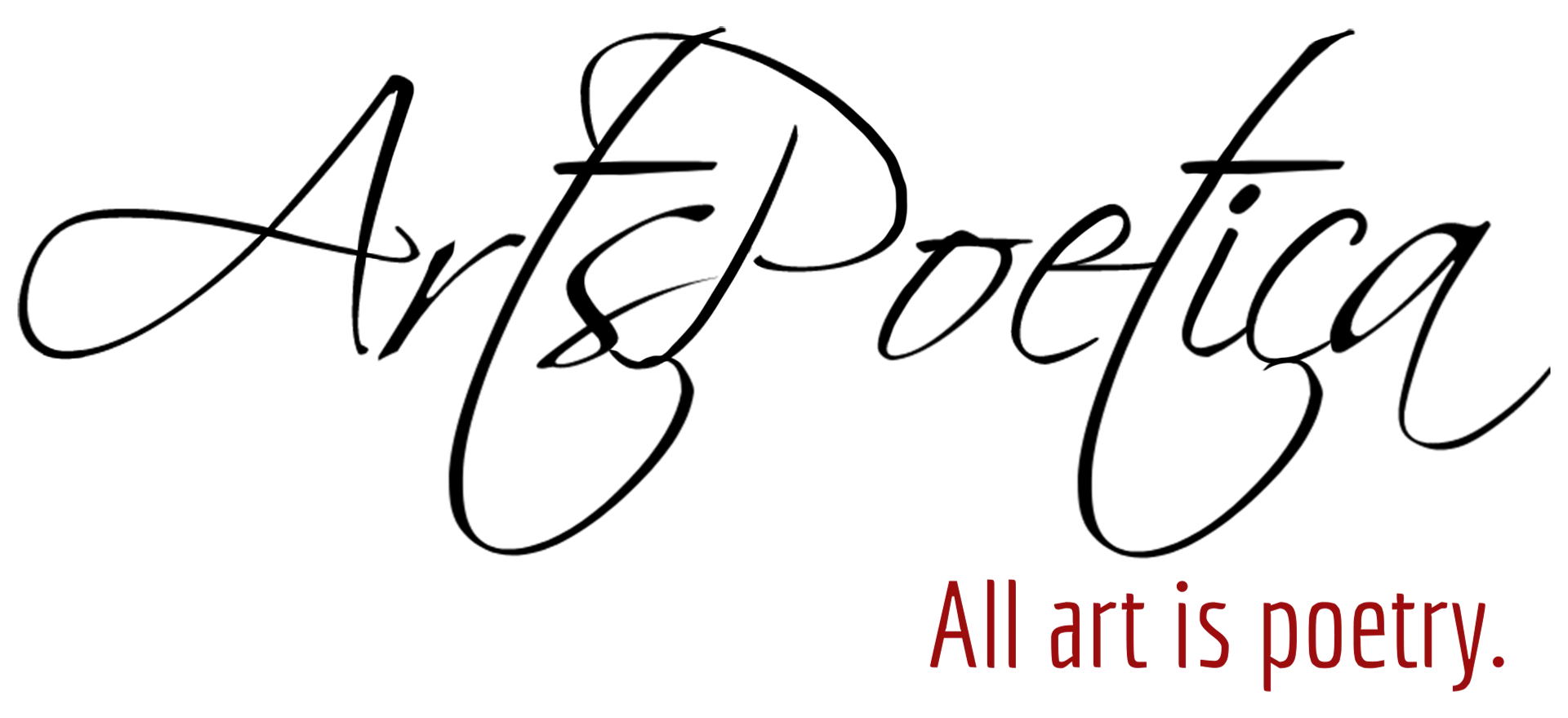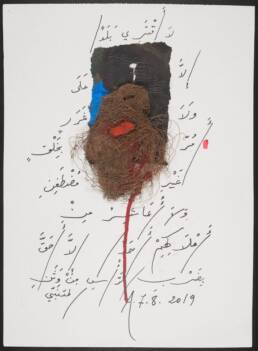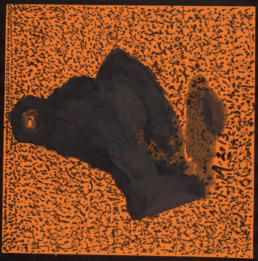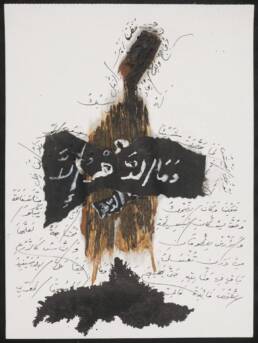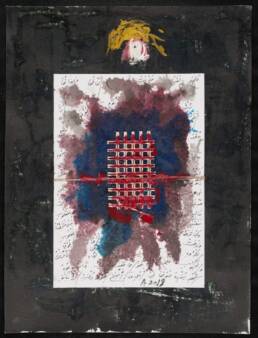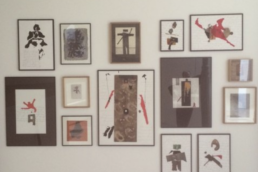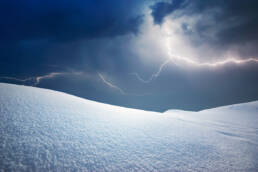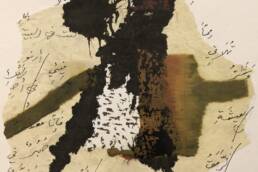A Wandering Light in the Universe
Mirror of: The Courtald – Immediations vol 4 no 4 (2019)
Adonis, born Ali Ahmad Said Esber in al-Qassabin (Syria) in 1930, is a poet, writer and visual artist. Adonis was exiled to Beirut in 1956 and moved to Paris in 1985, where he is still based. In addition to his poetry, for which he was awarded the Goethe Prize in 2011 amongst others, Adonis has written about literature and art and continues to be a critical voice in magazines and newspapers on political and social affairs. Since the 1990s, Adonis has been creating visual works of art with found materials which he has exhibited worldwide. In conversation with Immediations editors Ambra D’Antone and Erica Payet, Adonis discusses the different dimensions of his visual practice.
Adonis, you have an impressive reputation as a poet, more so than as a visual artist. In previous interviews, any mention of your visual works is always attached to larger discussions about your poetry. Nevertheless, when reading your poetry and looking at your works we can see immediately that you try to break the ideological boundaries between the two, so that artist and poet are no longer distinct identities. In keeping our focus on your visual works in our discussion today, we wish to bring out this aspect of your work and to have a larger understanding of your artistic practice. Let us start by directly addressing the objects.
I have to say from the beginning that I don’t have a background in painting, properly speaking, or in sculpture. I don’t come from that tradition. It is true that I have met many artists and sculptors, and that I have written extensively about them, especially but not exclusively Arab artists. But I come at it from a different angle, from the angle of poetic vision. I believe that to be a poet means to experience the world wholly, as a totality. Everything is poetry. Even the peasant is a poet: he works in his garden, he works in the fields and changes them. There is change and there is reconstruction—within this cycle, everything is poetry. Everything, even love…all of it. I wanted to widen the frontiers and the space of the written poem. For that reason, I have tried to create poems with ink, lines and stains…just like this. They are extensions of my poetry and they themselves are poems, written in a different manner. Every poem, every work has its own personality, its way of being.
When did you start making them?
I started a little over twenty years ago, by accident. I said to myself, you know quite a few painters and sculptors and you’ve written about them—sometimes one gets fed up of writing and reading—so I told myself why not try making something, giving your hands away to the ink and finally liberating them? And I did try. I made visual works for around a year, but when I looked at them, I did not like them, and I destroyed them. Then I started again, but this time it seems I did something different. One day my friend Michel Camus, the French poet, came to my studio and saw what I had done, these little things, and asked me who the artist was. I told him “It’s a friend of mine” (he laughs), I did not have the guts to tell him it was me! He said that he’d love to meet that friend, so I told him that I would arrange a meeting for the following week, in my studio. Michel showed up a week later; we sat down and chatted about various things for a while. About twenty minutes later, he finally asked: “So, where is your friend?” Only then did I muster the courage to tell him that I was the artist! He was very happy, he said he loved the works and suggested I exhibit them. Here, that’s how I gained some confidence in my practice and decided to carry on with it. Ever since that, many people have liked what I do and I have held some big exhibitions, for me they are immense! I have a big show planned in Hangzhou, in China, opening November 1st; I have already exhibited in China three times, but I have also shown the works in Paris and London…so you see, I am in demand! That’s how I carry on with it.
What type of subjects do you wish to represent?
Just like in my poetry, I want to represent simultaneously the small, mundane things of everyday life, as well as the farthest, most obscure metaphysical truths, the totality of the cosmos. These are my subjects, because I am not an ideological man and I feel like I have been thrown into this universe. I don’t concern myself with hard-core politics, with regimes and ideology, my works are not about that. I question beauty, love, the meaning of life, the future, the poverty that is so widespread in the world. Why is there poverty, in a world so rich and varied?
You prefer to call your works raqīma (رقيمة), rather than collages. Why?
That’s it, raqīma. We constantly have to create. I come from an Arab culture, and in Arabic the word collage has a bit of a negative connotation. But there is a word, raqama or raqana, which designates both the ink and the form, the line. So, I thought, I ought to invent a new word, raqīma, instead of saying collage.
Can you say a bit more about the importance of materiality and of technique for the raqīma? Where do you find the materials for the works?
It is just like the words in a poem. There are specific words that signify material things, and a poem is made up of different words, from God to a pebble. So, you see, my material can be everything. Anything I see, no matter what, plays a part in the symphony of the work. Everything, without exception. That’s why I find my materials in the streets. Once somebody saw me, while I was picking up something from a curb to use in my works, and the way he looked at me, I am sure he must have thought “This guy is crazy”! (he laughs). You see, it is like giving meaning to the insignificant.
You have said before that you have “a problem with painting, with colour”, and that you prefer using ink.1 In the Fifties and Sixties, some artists rejected artificial paint, inspired by prehistory or pursuing a political statement. Do you establish a dialogue with these practices?
This is really personal. Using ink gives me more freedom than traditional colours, but I know this is relative. Maybe one day, if I ever have a big studio, I could master colour, create my own. Maybe then I could change. You see, everything is open for me, everything is possible—even the impossible. Ink is easier, I have control over it. I always like being at the core of my materials: I like to change them, break them, turn them around, make new forms from what is in front of me. Ink allows me to do that easily. Yet, I do hope one day to be able to do that with paint. I did try, in four works. A friend of mine, a painter, came to me and I told him how much I’d love experimenting with paint.2 He encouraged me, and I produced four canvases. He liked them and he plans to exhibit them in Venice! Those canvases are my first works not on paper. There have been many interesting experiences with paint in the past, there were many artists that used a variety of materials even without paint. Whether I am in dialogue with them depends—in the last analysis, the work of art for me is form, not an idea. The essential moment is the creation of new form, and the idea will follow. This is not easy. But this means that the artwork is open to every possibility, to every materiality. I can say this for sure: there are no limitations, and if there were there would be no art at all. The creation of art necessarily exceeds the boundaries placed on form.
The medium of raqīma also seems to allow for a reflection between existence and non-existence. You reflect a lot on the idea of the fragment, for instance. Is this conscious?
You see, a work of art is important only insofar as it opens itself up to a myriad of interpretations. Its wealth resides in that. When the meaning of an artwork is hard to pin down, that work is like an aperture onto infinity. That’s why the Old Masters are still talking to us. Michelangelo is here right now; he is drinking Perrier with us! (he laughs)
In the past, you have talked about the hand as being a privileged tool that is rarely subjected to mental censorship. Can you elaborate?
When I say this, I have a particular focus on Arab civilisation and the history of the Arab world, but I think it equally applies to other peoples and other histories. There is a perennial preoccupation with and interest in the mind and what it does: the creation of language, culture, imagination etc. But we always forget about the hands. Think about it: hands are a thing of genius! That’s because they have no reins. The head is constricted by rational rules and limitations. While the head thinks, the hands play, and they are the absolute players. Art is the great game, in the positive sense, and God, who has created this world that is so varied and infinitely complex (but you can believe whatever you want), is the greatest player of all. So, I think, we need to free our hands. The artist, especially, plays with the hands: the coincidences and chance encounters between form and colour cannot happen but with the hands, because the head is always busy thinking, being rational! Hands are not enmeshed in calculations, and that’s why they matter. Though, this has been neglected by the public and by historians: have you read a single book about the history of hands in England? In Islam, hands have accomplished wondrous and beautiful things—not the head. There are hand-woven carpets that are worth thousands of books! That’s why I believe we have to care for the hands and set their genius free. Unfortunately, in order to do that I have had to do things that I did not have control over. Because yes, we want freedom, but that comes at a cost. We cannot be free in a cage, in a prison, or a restrictive tradition. There are conditions.
In your raqīma the written language plays a crucial visual function, almost like an outpouring of poetry into the visual domain, or a translation of one medium into the other. How do you understand this relationship?
Writing, in the sense of a sentence written on a visual work and its semantics, for me has nothing to do with form. Writing, just like a background, like a line, plays an integral and essential role in the artwork. It absolutely cannot be reduced to an illustration, an accompaniment. Form and writing are not separate, no. They are a whole. That’s why I occasionally use a pseudo-script, an imitation of language: I do not wish to create a writing and a work, but a work made of words, of lines and of ink. It is not a process of addition, but a totality.
Can you talk a bit about the poetry fragments that you choose for your works?
In principle, I like to celebrate the great Arab poets of the past. Poetry is very marginalized in Arab society, although Arabs have created nothing but poetry! It is their single greatest creation. Despite that, it is not well known, and it is disregarded. That is why I like to celebrate those poets—everything I write is meant to pay homage to them and to poetry.
Your work speaks in and of different languages: Arabic, your native language and the language you write in; French; the language of poetry; the visual language; the language of political criticism. What is the language you feel best conveys what you want to say?
Fortunately, or maybe unfortunately, we only have one mother. Maybe we have more than one father, though…you never know! (he laughs). But one mother only. The language of creation is the mother tongue. My mother tongue is Arabic, so I write and create in Arabic. Additionally, there are languages of culture, that I like to call the father-tongues. My father-tongue is French.
You were one of the founders of the journal Shi’r together with Yusuf al-Khal, amongst others. The journal was a fierce advocate of translation. What are your opinions on translation? Not just as a literary act, but also as cultural and possibly artistic transmission.
The issue around translation is really complicated, and on top of that we can never reach a consensus. Translators and writers are always criticizing each other’s translations! Once a friend of mine who is Russian told me “I beg you, Adonis. Do not read Pushkin in French, because rather than translations those are deformations!” I asked other friends of mine who are French, and they liked the French translations! My beloved friend Yves Bonnefoy, who has unfortunately passed away, translated Shakespeare. I could never find any English speaker who could criticize his translations! But, instead of admitting that Yves Bonnefoy has given Shakespeare a new dimension in French, we always criticize his way of translating and of rendering the original words. Translation is a space of conflict. Although, despite that, I firmly believe that our future culture will be founded on translation, or it will not exist at all. For me, the importance of translation is beyond discussion. We live in a multi-cultural and -linguistically plural environment; without translation there will be no future, because the future is translation. New generations will have to speak different languages, because only one language is absolute poverty—it cannot work! At the same time, translating a philosophy book and a poetry collection are different things, and when we get to the nitty gritty details my opinion is based on my personal experience. First, I believe that in order to translate poetry it is necessary to be deeply aware of what poetry is, it is necessary to know the poet and his language, more than one’s own mother-tongue. The mother-tongue receives the other, and so must be intimately acquainted with it. Secondly, we cannot translate literally. There can never be any word-to-word correspondence from one language to another, never. Because words in a poem don’t come from a dictionary, but from their context, from their relationship with the words before and after, as well as from its role within the imagination. Translating a poem means translating its imagery, not its words. So, you see, translation is a very complicated matter and we are never in agreement. Thankfully!
And speaking of translation—can you tell us about your experiences exhibiting your visual work to the public in Paris, London and China? Were those experiences different from each other?
The Chinese are more open, more understanding and disinterested in the art market that dominates Europe. I have sold many works in China, but only to intellectuals and such people. I think I am better understood in China than in Europe, although there are individuals in Europe—but it is a handful of people—who understand my works and my poetry.
In terms of being understood and communicating with an audience, is writing poetry for you different than making visual works?
Firstly, a poet never writes for others. The other always comes after. Look at this audience here: how can a poet write for them? It is ideological, it kills poetry. Everything that is common is anti-poetic. You see, when these people enter a gallery and look at artworks, they all formulate different opinions. Writing for the people is nonsense. And we must also ask: who are the people? The peasant? The workers, or the bourgeois? The soldiers? The regime? The absurdity of these questions demonstrates that these are nonsensical words, they are ideological and political. The poet wants nothing to do with that. Firstly, I write to understand myself better. Who am I? Secondly, I write to understand the other better. And thirdly, to understand the world better. To gain a better understanding of all three, in my writing I establish a meeting point with what we call the reader. The work of art is a space of confluence; there is no single message because there are many messages. The way Michelangelo speaks to us today is necessarily different from how he spoke to his contemporaries. So, we write to make the world more beautiful and more open, beyond all ideology. Ideology is a veil covering not just the face but covering truth and, ultimately, the world.
Does this apply to your visual works as well?
Yes, absolutely. They are also poems.
Let’s talk about your life away from Syria. You once said that exile is an internal condition rather than a geographical one.3 Can you elaborate on this?
The way I see it, we are all thrown into exile. It is true that we are born free, but that has nothing to do with real freedom. I was born, I came to this world free, but at the same time I was placed in exile. The human being enters at birth a state of exile. This essential and existential exile is a product of the ambiguities of the world we live in. Why live? Why die? Why live, if only to die? If we only live to die, why be born at all? So, you see, the problem goes deeper than ideology and faith. Religious faith is appealing to people, because they no longer have to think or to search or to struggle. They follow a ritual, and that calms them down. But for those who constantly question the human nature and the world, who question the beginning and the future, the finite and the infinite, there is no answer. For them the world is a constant search, so they are always exiled. Even when I am writing, I can never fully express myself—I am exiled within language. Today I am not who I was yesterday, I have changed. There is no place where man stays the same throughout his life. The condition of exile has nothing to do with geography; it is an internal, a human condition.
So, do you feel Syrian, or French? Or neither?
That is not a concern for me. What engages me and preoccupies me constantly is the earth, the soil where I first set foot. I love to see it, but I would never live there. Maybe it is psychological—I like to see who I was and, by contrast, who I have become. It is very personal. My country is these two or three meters where my feet touched the earth for the first time.
Let’s talk about regionalism: for example, Turkey and Syria are neighboring countries, and have a shared Ottoman past. Modern artists had similar concerns and strategies in Turkey and Syria. Yet nowadays they are considered separate regions, ethnicities, cultures. What do you think about this? Are identities so separate, or was there some hybridity and cross-cultural transmission, historically?
This is complicated. Turkey for me represented hope, a hope founded on Mustafa Kemal Atatürk and his reforms. A country based on secularity. It is hard for me to think about Turkey in other terms. Let us give the people who believe in God the freedom to pray as they wish. But the state, the law, the institutions, education…everything must be secular. I think this must apply for Syria and the Arab world as well. Without a clear separation of state and religion, there cannot be anything but decadence. And not just decadence—decay and the ultimate end! I do not envision a real human future for the Islamic world—Turkey, Syria, Egypt, etc. – without a radical separation of religious and secular powers. Otherwise it is a catastrophe!
The modernist Syrian artist Fateh al-Moudarres (1922-1999) once said, that “the artist is a witness of their time.” What are your opinions on this?
That makes sense. I would add that there are artists, poets and creative individuals who are part of history, but there are others who create history. History plays a part in their creative act. Everything that is institutional, political or social is bound to fade. The great kings and leaders of the world, the great political figures, they are all gone. But never Michelangelo or the great painters, who are always there. Never the great poets, who are always there. They weave history in their production—not just as witnesses, but as active creators. That is why it is in art that peoples and nations find their identity.
So, what role do your works play in history?
I do not know! This is not for me to say, only the future will determine it! (he laughs).
In the 90s you wrote a book linking Sufism to Surrealism. For some, this might be a contentious pairing—especially given the anti-religious attitude of Parisian Surrealists. Can you explain how you understand the relationship between the two?
Sufism, or mysticism, is crucially misunderstood. Sufism and the Sufis, whom we call Islamic mystics, have nothing to do with official Islam. In fact, they have completely changed the conception of God in Islam. In Islam, God is a force ruling the world but outside of it, detached, much like in the Bible. For the mystic, God manifests himself immanently in the universe, and the universe is part of him—destroying the notion of God in Islam. How then can we call them “Muslims”? Secondly, the mystics have also changed the concept of identity, from one of heritage to one of creation: being born a Muslim does not mean that you will remain a Muslim. We do not inherit our identity in the same manner we may inherit a plot of land, or a house. The human being creates his identity, in creating his oeuvre. Thirdly, they have changed our understanding of the other: in Islam the other is always a renegade, either a Muslim or a social reject. The mystics have reinforced equality amongst men. The I does not exist without the other, and in order to find myself I have to go through the other. The other is a constitutive element of the self. So, it must be clear that the mystics have subverted Islam completely, which is why Islam has forsaken them. The people here, the orientalists and their students, do not understand this. Think of the condition of being a woman in Islam: for the mystics, the feminine constitutes the origin of the world, against the official tenets of Islam. Moreover, the mystics have invented the practice of writing by dictation—a dictation which comes from beyond, like automatic writing. I have told poets, especially Arab poets to read the mystics before reading Surrealist texts and being influenced by them. But they do not want to understand that it is a mysticism without religion! Sufism is a Surrealism avant la lettre, as well as essentially an anti-Islam mysticism.
You have said that Arab poets of the past like Abu Nūwas (756-814 AD), Al-Niffari (10th century) and Al-Maʿarri (972-1057 AD) invented al-imlaʾ, the technique of writing by dictation, a sort of automatic writing like that which the Parisian surrealists used in the 1920s. Do you see the Arab poets as precursors of Surrealism?
I do not say that, but after reading the mystics and the Surrealists I do make note of the fact that there is a Surrealism avant la lettre. I have signalled this connection in my book Sufism and Surrealism. Though, people still do not understand that I am talking about a mysticism without religion and they criticize me, even if it is written on the first page!
In your book Le Diwan de la Poésie Arabe Classique (2008), you talk about reading the poetry of Abu Nuwas and al-Niffari and truly understanding it as revolutionary after having connected with Surrealism. What do you mean by this?
Yes, I do think that. In order to become acquainted with Surrealism and to be inspired by it, I think that an Arab poet should read what is available in his or her language, rather than a (contested) translation of Parisian Surrealist texts. Read what you have in your tradition! But they do not read it, they are completely mesmerized by the other. And by the way: Surrealism has been a great source of conceptual and visual inspiration, but it has never created a great poet. All the great poets that had encounters with Surrealism, eventually left it: René Char, Yves Bonnefoy, Paul Éluard, Louis Aragon…André Breton was an extraordinary theorist, a great character whom I admire as a prose writer—I am thinking of Nadja, for example. But he was not a great poet! (he laughs). Unfortunately, I did not have a chance to meet him, but I did meet Aragon in his last days, and Tristan Tzara too… Surrealism has caused an incredible and necessary shock to society, creating painters and theorists, but there is no great poet we can call Surrealist. Al-Niffari was the greatest Surrealist that ever existed!4 But this a contestable statement, because there are always imperialist considerations, and moreover everything that emerges from the Islamic world is immediately labelled as religious. Yet, we cannot identify everything as religious. There are and have been many who were born Muslim but are not Muslim, neither in practice nor faith. Abu Nuwas was a Muslim, for instance!5 Unfortunately, people tend to generalise. Never, in writing poetry or otherwise in creating art, must we accept things for what they only seem to be. This is complicated.
Were Surrealist texts available to you in Syria in your youth?
My French was poor, I could not have understood them. But I did read some when I came to Paris. The majority of my friends were Surrealists. The last great Surrealist that existed was a good friend of mine and wrote a lot about me and my works—Alain Jouffroy. He wrote a very good article about me in a catalogue for the Institut du Monde Arabe. And so, I was on the side of the Surrealists: I was their friend, but only to better understand the relationship between East and West, only as a Muslim. But the term “Muslim” has infinite variations. We tend to mask or even erase this variety, because it is difficult to find. Simplification kills it and renders everything banal.
Would you say that what people like the Syrian poet Orkhan Mīassar (1911-1965), Syrian painter ʿAdnān Mīassar (1921-1979) and Fāteh al-Moudarres were doing in the 40s and 50s in art and poetry—would you call that a Syrian, or Aleppine, Surrealism?
Yes. They were influenced both by Surrealism and by Sigmund Freud. Freud was particularly important for Orkhan, who was a great friend of mine. Unfortunately, this was a unique case. In Egypt Surrealism enjoyed more popularity. You know, to master the body the Surrealists resorted to mescaline and drugs, like Henri Michaux—to the artificial. They resorted to the artificial to arrive at the natural. This is contradictory. The Sufi, the mystic mastered his body naturally to arrive at the supra-natural. That is Surrealism. The Sufi never resorted to drugs and reached a complete mastery over his body, becoming a wandering light in the universe. We also have to discuss the importance of femininity both for mysticism and Surrealism. The feminine is the source of existence, in it resides the essential core of this world. To quote the Sufi mystic Ibn ‘Arabi, Kullu makānan lā iuʾannathu, lā iu’awwalu ‘aleihu,“ consider worthless anything that does not feminise.”
What does it mean to you to be making art today, as a Syrian? Do you think art, and your art, has a role to play in the context of war and violence?
We would have to talk about this extensively, about what it means to create in Syria right now. But let me ask, what is the difference between creating now and before? It is a matter of degree, rather than ontological. You cannot create in a society founded on religious beliefs—there cannot be any creation, only repetition. We must understand that, so that instead of supporting fundamentalism, the Muslim Brotherhood, the terrorists, we can support life and people. It is shocking to see the France of the Revolution supporting Erdoğan or supporting Saudi Arabia in its war against Yemen. I believe that the problem is no longer in the Arab world, it is in Europe. Unfortunately, Europe has become a satellite of the United States, thanks to the influence of Trump, when it should be the opposite. Everything is subverted!
In your interviews this is generally the first question you are asked, so I will finish with it. In Ugaritic mythology, the figure of Adonis signals the cycle of death and rebirth, and was an important symbol for Shi’r. You are still using this name as an artist. Is its symbolic content still important to you?
At the beginning, I never thought about that. I took the name Adonis by chance. But in time, I came to understand that the name freed me, it completely transformed me. I was part of a culture, but thanks to that name I started to break away from it, to be part of another culture. The west was a threshold for me, a completely new horizon. But that happened with time, not at the beginning. It was an absolute metamorphosis. Instead of being a member of a limited civilization, founded on a religion vision, I became enmeshed in the universe. The universe is my nation.
Related Posts
March 18, 2023
The Magic Instant
Written in 2020 under a cherry blossom tree next to a small coy pond. I wrote…
